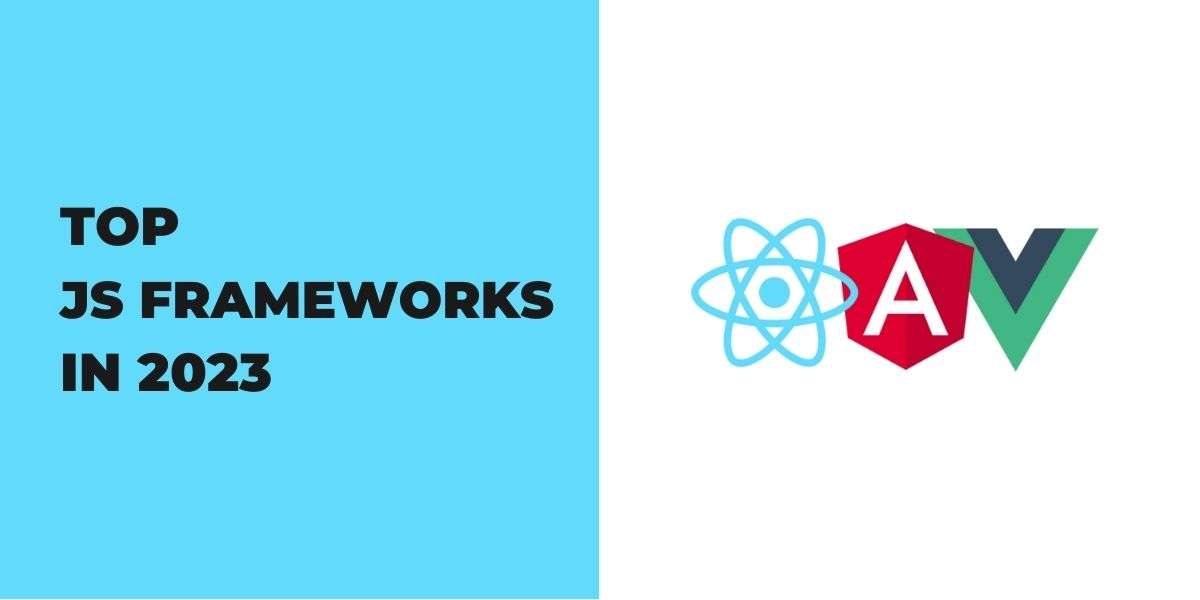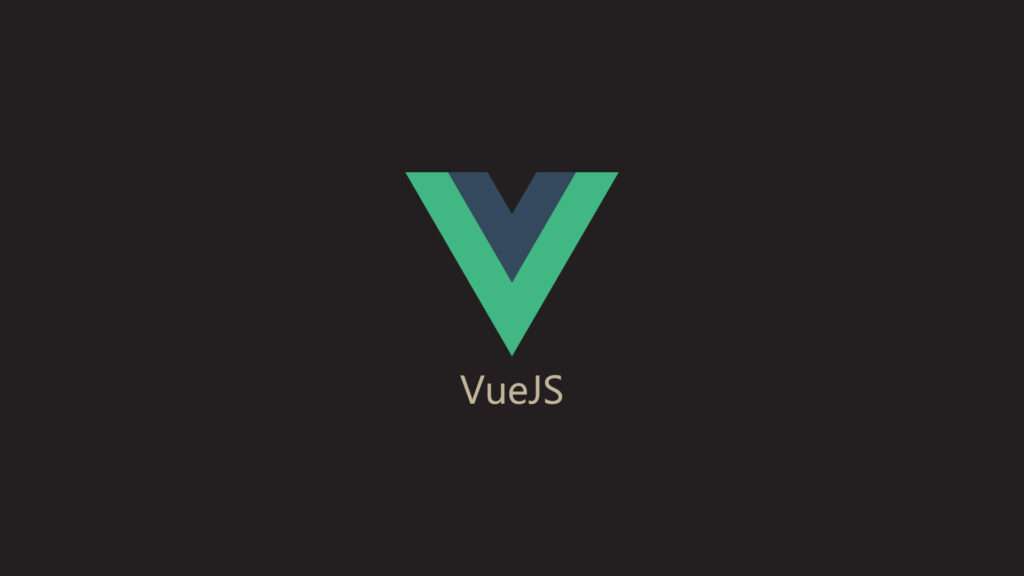Top JavaScript Frameworks in 2023

JavaScript frameworks are an essential tool for modern web development. They provide a powerful set of tools that developers can use to create complex and interactive web applications quickly. In this article, we will discuss the best JavaScript frameworks that you can use in your projects.
React
React is one of the most popular JavaScript frameworks, and it is widely used by developers worldwide. It is a powerful tool that allows developers to create complex user interfaces easily. React uses a declarative approach to programming, which means that developers can focus on the design and structure of their applications rather than the implementation details.

React also offers excellent performance and scalability. It uses a virtual DOM that allows it to update only the parts of the UI that have changed, which significantly improves performance. Additionally, React is highly modular, which means that developers can reuse components and libraries across different projects.
Benefits of Using React
- Reusable Components React’s component-based approach allows developers to import or reuse UI components effortlessly, saving time and effort that would have been spent coding from scratch.
- Easy Integration React allows easy integration with other front-end and back-end frameworks like the popular PHP framework Laravel, ensuring seamless functionality without any issues.
- Directional Dataflow React follows a downward directional data flow architecture, ensuring that a child element cannot affect the parent element. This approach results in more stable and less error-prone code.
- Simpler Syntax React uses JSX, a JavaScript extension that resembles HTML syntax, making the code easier to read, understand, and maintain.
- Virtual DOM React creates a virtual representation of the DOM called the Virtual DOM or vDOM, which it compares to the real DOM to render only the components that have changed. This approach significantly boosts React’s performance, making it blazing-fast.
- SEO Friendly After many improvements, React has become one of the most SEO-friendly front-end frameworks, making it easier for search engines to crawl pages. This is a significant improvement over traditional JavaScript frameworks that were notorious for their poor SEO performance and incompatibility with search engine crawlers.
- Continuous Improvement React is in a constant state of evolution and improvement, with new features such as Hooks, Fiber, Concurrent Mode, and Suspense being added regularly. These updates reduce boilerplate code, improve concurrency and fast rendering, and boost performance, making React a strong contender in the best JavaScript frameworks category.
- Rich Community Support React is backed by a massive developer community, with almost 1.6k contributors on GitHub and a wide array of learning resources, tutorials, and help guides readily available to anyone starting. Additionally, React is backed by Facebook, one of the world’s largest and most powerful companies.
Disadvantages of Using React
- JSX Learning Curve Although JSX is a simpler syntax that is easier to read and comprehend, it might present an additional learning barrier to new developers.
- Steep Learning Curve Many developers might feel that React has a much steeper learning curve and bloated complexity than rival frameworks like Vue.js or other best JavaScript frameworks.
- Poor Documentation React is often plagued with complaints about poor documentation that cannot keep up with new releases and features, forcing developers to rely on online communities and resources.
- Deals with the View Layer React deals only with the View layer of the MVC Model, leaving developers no option but to rely on other technologies to deal with Model and Controller Layers.
Angular
Angular is another powerful JavaScript framework that is widely used by developers worldwide. It is a full-featured framework that provides developers with a comprehensive set of tools to build complex applications. Angular is built and maintained by Google, which ensures that it is always up to date with the latest web development standards.
One of the significant benefits of Angular is its dependency injection system, which makes it easy to manage dependencies and modularize code. Additionally, Angular offers excellent performance and scalability, making it an ideal choice for large and complex applications.
AngularJS has a multitude of benefits, primarily attributed to its component-based architecture. With the adoption of this architecture, the reusability of components is greatly enhanced, resulting in a codebase that is easier to read and maintain. Moreover, AngularJS also supports caching and other features out-of-the-box, leading to fast server performance.
Advantages:
- Uses Model-View-Controller (MVC) pattern with scopes and data binding to separate UI from application logic
- Supports two-way data binding for a reciprocal relationship between Model and View
- Allows for third-party integrations to expand functionality of web applications
- Large developer community backed by Google provides extensive documentation and resources
Disadvantages:
- Requires TypeScript, which has a steep learning curve for new developers
- Heavy and bloated compared to more lightweight alternatives, which may not be suitable for smaller applications
- Struggles with SEO due to accessibility issues faced by search engine crawlers and spiders
Vue
Vue is a relatively new JavaScript framework, but it has quickly gained popularity among developers due to its simplicity and ease of use. It is designed to be easy to learn and use, making it an ideal choice for beginners and experienced developers alike.

One of the significant benefits of Vue is its lightweight nature. Vue is just 20KB in size, making it one of the smallest JavaScript frameworks available. Additionally, Vue offers excellent performance and scalability, making it an ideal choice for small and large projects alike.
Advantages:
- Simplicity: Vue.js is known for its simplicity, making it easy for developers to learn and work with. Unlike React or AngularJS, even new developers can pick up Vue.js quickly. The structure of Vue.js is straightforward, allowing you to write code with typeless syntax. Moreover, Vue.js uses a single-file component system, meaning that HTML, CSS, and JavaScript are in a single file for each component.
- Built-in MVC: Vue.js has a built-in MVC (Model-View-Controller) architecture that enables quick and easy configuration, unlike ReactJS.
- Easy to Learn: Vue.js does not require you to learn JSX or TypeScript like React or AngularJS. It uses easy-to-grasp HTML templates that don’t increase the complexity of code.
- Small Size: Vue.js is surprisingly lightweight given its impressive prowess. The zipped version of Vue.js is barely 18-20 kb in size, much lighter than its bloated, bulky rivals like React or AngularJS.
- Integration: Vue.js is not only used to create applications from scratch but can also be seamlessly integrated into existing web apps without any trouble creating new components.
Disadvantages:
- Small Community: Vue.js does not enjoy the backing of a giant like Facebook or Google, as in the case of React or Angular. But Vue has managed to create a community of backers. On GitHub, Vue has 360+ contributors, which is decent but nowhere close to the backing React enjoys with 1.6k contributors.
- Limited Employment Opportunities: Vue.js is undoubtedly popular in China and the US, but that may not be the case in the rest of the world. Traditionally the US is the leader in new technology adoption, with the rest of the world lagging.
In conclusion, Vue.js is a powerful and lightweight framework with a simple syntax and impressive features. It has some downsides, but these can be overcome with time and effort. Therefore, Vue.js is a viable option for developers seeking to create fast and efficient web applications.
Ember
Ember is a robust and powerful JavaScript framework that is ideal for developing large and complex applications. It provides developers with a comprehensive set of tools for building scalable and maintainable applications.
Ember uses a convention-over-configuration approach, which means that developers can focus on building their applications rather than configuring them. Additionally, Ember offers excellent performance and scalability, making it an ideal choice for large and complex applications.
Advantages:
- APIs: Ember.js has a simple mechanism for working with APIs, making it easier for developers to build web applications.
- Convention over Configuration: Ember.js follows the “CoC – Convention over Configuration” approach, which means that developers do not need to configure anything in most cases, and they can start coding and building their web application right away.
- Rich Documentation and Support: Ember.js provides detailed documentation, thorough tutorials, and help guides to help developers get started easily.
- Ember CLI: The Ember Command Line Tool is a productivity booster that not only helps set up new projects but also creates components and controllers using automatic generation. Ember CLI also helps install third-party dependencies.
- Inspector Tool: Ember.js has an Inspector development tool extension for Chrome and Firefox that helps developers monitor and edit applications in real-time.
- 2-way Data Binding: Ember.js supports 2-way data binding similar to AngularJS.
- Backward Compatibility: Ember.js has backward compatibility with previous versions.
Disadvantages:
- Steep Learning Curve: Ember.js may be challenging for new developers to learn compared to Vue.js or React.
- Highly Complex: Ember.js can be complex for large-scale applications and might be too bulky and heavy for simple small-scale applications.
- Highly Opinionated: Ember.js is opinionated, meaning that any deviation from doing things in a standard way may lead to frustrating problems.
- Stagnation in Popularity: Ember.js has suffered stagnation over the last few years, failing to attract new developers into its fold.
Conclusion
In conclusion, JavaScript frameworks are an essential tool for modern web development. React, Angular, Vue, and Ember are all excellent choices for developers looking to build complex and interactive web applications. Each framework has its unique features and benefits, and the choice of which to use will depend on the specific requirements of your project.
PostCategories
Categories
- Digital Marketing (6)
- Everything Else (7)
- SEO (3)
- UI/UX (3)
- Web Development (5)
- WordPress (10)
AboutAuthor
 Hi I’m Rehan! I’m a highly experienced full stack web developer and web optimizer from India. I’m specialize in custom WordPress theme development and plugin development. I love to share my knowledge and help the world to build a better web.
Hi I’m Rehan! I’m a highly experienced full stack web developer and web optimizer from India. I’m specialize in custom WordPress theme development and plugin development. I love to share my knowledge and help the world to build a better web. 


2 Comments
My coder is trying to convince me to move to .net from PHP.
I have always disliked the idea because of the expenses. But he’s tryiong
none the less. I’ve been using Movable-type on a variety of websites
for about a year and am worried about switching to
another platform. I have heard good things
about blogengine.net. Is there a way I can transfer all my
wordpress posts into it? Any help would be really appreciated!